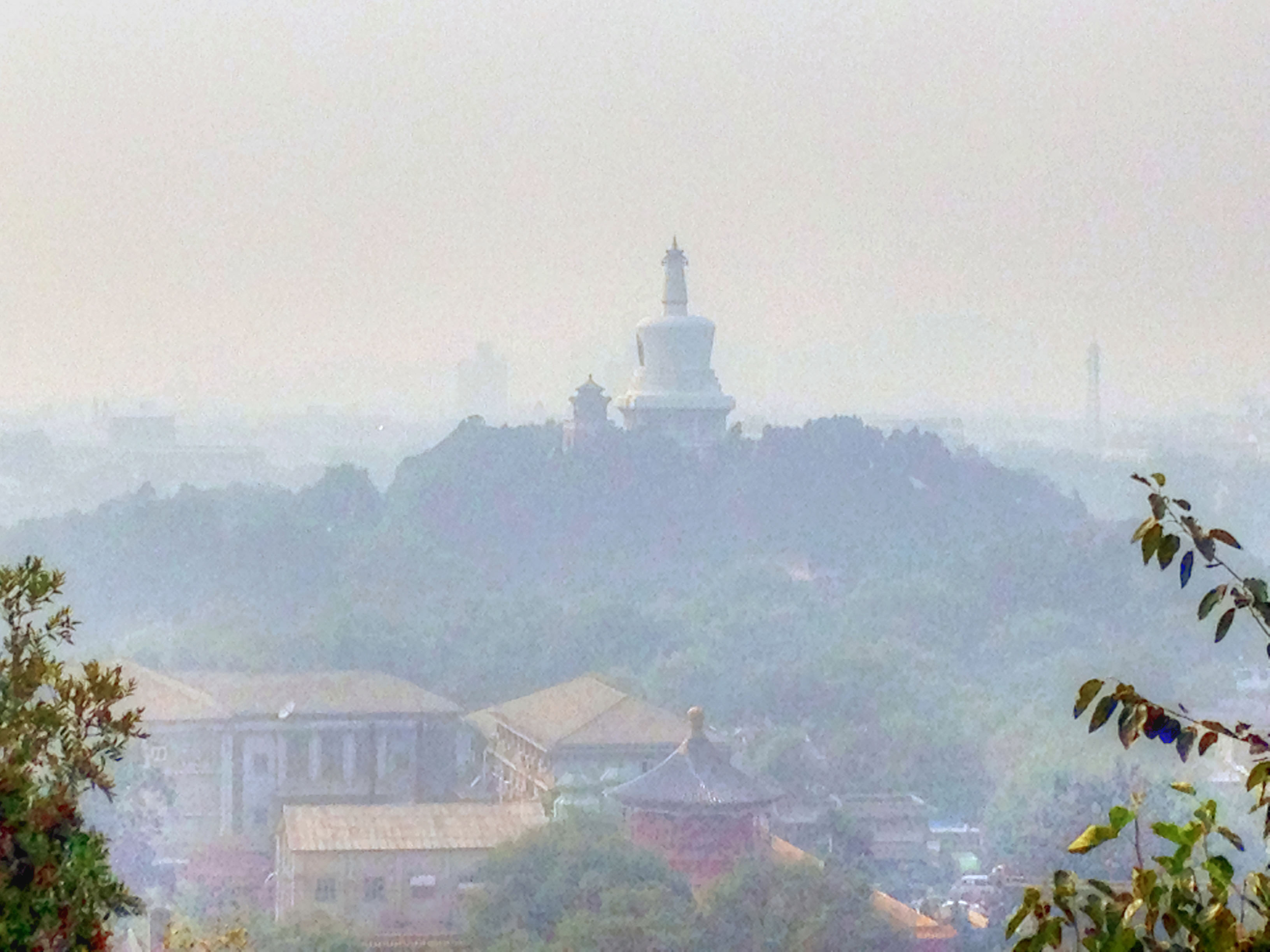COVID-19 lockdowns linked to pollution spikes in some cities
New study investigates how emissions changes affected secondary pollutants
Apr 14, 2021 - by Laura Snider
Apr 14, 2021 - by Laura Snider

Air pollution in Beijing. In some cities, including those in northern China, the decrease in emissions due to COVID-19 lockdowns actually caused an increase in ozone pollution. Image: Yinan Chen, Wikimedia.
Lockdowns last year in response to COVID-19 resulted in drastic cuts to emissions, especially from vehicle tailpipes, and yet some urban areas saw a paradoxical spike in ozone air pollution. A new study led by the National Center for Atmospheric Research (NCAR) used a sophisticated computer model to disentangle the complicated web of atmospheric chemistry and meteorology to determine the causes of poor air quality.
The research, published in the Journal of Geophysical Research: Atmospheres, finds that for some regions of the world, including northern China, the increase in ozone pollution was directly linked to the decrease in emissions, while in other regions, including Europe, unusual weather conditions played a larger role.
The research highlights the complex interactions that determine air quality and offers some insight into what might happen if more stringent air quality regulations were put into place in some of the world’s most polluted cities.
“The COVID-19 pandemic provided us with an unanticipated global air quality experiment,” said NCAR scientist Benjamin Gaubert, who led the study. “With our Earth system model, we were able to investigate how the atmosphere responded to a change in the types of chemicals emitted in the air — in particular changes to secondary pollutants, like ozone, that are formed in the atmosphere and not directly emitted from human activities.”
The research was funded by the National Science Foundation, which is NCAR’s sponsor, the European Commission, the European Space Agency, and the Hong Kong Research Grants Council.
In early 2020, cities across the globe began to lock down, first in China and then in Europe and elsewhere, as decision makers struggled to stem the spread of COVID-19. A side effect of the closures of schools, businesses, and other gathering places was a steep decline in emissions, such as nitrogen oxides and volatile organic compounds, as people cut back on driving and other types of travel.
In many parts of the world, this decrease contributed to clearer skies, and the often-smoggy skylines of some major cities, including Los Angeles and Delhi, became crisp. However, scientists also noticed that in some specific areas, air pollution actually worsened. For example, in some northern Chinese cities, including Beijing, ozone pollution increased significantly, in some cases doubling.
“We were surprised at first, but really, it should not have been unexpected,” said Guy Brasseur, an NCAR distinguished scholar and study co-author. “It actually confirmed what we know about the complexity of the chemical system.”
Air quality is determined not just by the pollutants that are directly emitted into the air, but also by the chemistry that transforms those pollutants once they enter the atmosphere. Air quality also varies with the time of year and with the weather conditions, which makes it difficult to attribute changes to air quality during the lockdowns — for better or for worse — entirely to the lockdowns themselves.
To determine the causes of air quality changes observed during the pandemic, the research team used the latest version of the NCAR-based Community Earth System Model (CESM2.2). They first simulated what air quality would have looked like in 2020 if emissions had been in line with previous years and then repeated the experiment with the actual decreases in emissions that occurred due to COVID-19. By comparing the two, they could tease out the impacts of weather and atmospheric chemistry on pollution, specifically ground-level ozone.
Ozone is formed in the atmosphere when nitrogen oxides (largely emitted from burning fossil fuels in vehicles and power plants) and volatile organic compounds (emitted from a range of sources, including paints, solvents, pesticides, and building materials, as well as from vehicles) react in the presence of sunlight and heat. While nitrogen oxides are a necessary ingredient for making ozone, they can also act to destroy ozone when their concentration is too high.
During the pandemic lockdowns, this meant that reductions in emissions in some cities that typically have very high concentrations of nitrogen oxides — including Beijing and other cities in northern China — actually limited the destruction of ozone that was taking place by extra nitrogen oxides, ultimately allowing local ozone pollution to increase.
In cities that are generally less polluted — including metro areas in the United States — the new study finds that the reduction in emissions robbed the atmosphere of an essential component for producing ozone, and therefore lowered the levels of local ozone pollution.
Increases in ozone pollution also occurred in northern Europe during the lockdowns, but the research team found that the dominant reason was the weather. In March and April, northern Europe was sunnier than average and southern Europe was cloudier. The extra sunlight in the north allowed ozone to form more easily, causing a spike in pollution despite the reduction in emissions.
“It is incredibly important to use models that simulate both the meteorological conditions and the atmospheric chemistry to properly understand what we’re seeing in the observations,” Brasseur said.
The study also offers insight into what policies might be most effective for combating air pollution. For example, in cities with extremely high levels of nitrogen oxides, it might be more effective to limit volatile organic compounds instead of nitrogen oxides if the goal is to reduce ozone pollution.
“This study offers insight into what steps could be taken to reduce emissions and improve air quality,” Brasseur said. “We learned that a one-size-fits-all approach may not be effective. The measures that may need to be taken vary with the season and they vary with the location.”